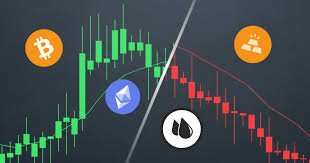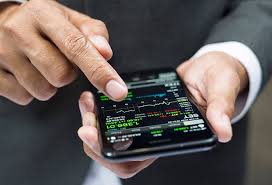The Ultimate Guide to Choosing a Crypto Day Trading Platform

The Ultimate Guide to Choosing a Crypto Day Trading Platform
In the rapidly evolving world of cryptocurrency, the right trading platform can make all the difference. With so many options available, navigating the landscape can be a daunting task for both newcomers and experienced traders alike. This article aims to provide you with essential insights on how to select the best **crypto day trading platform** for your needs. To gain a deeper understanding of the importance of platform selection, crypto day trading platform click here to read more about tech advancements that impact trading environments.
Understanding Crypto Day Trading
Before diving into platform selection, it’s crucial to understand what crypto day trading entails. Day trading is the practice of buying and selling assets within the same trading day. Traders aim to capitalize on short-term price movements, often executing multiple trades throughout a day. This fast-paced trading style requires a solid understanding of market dynamics, robust analysis tools, and quick decision-making skills.
Key Features of a Crypto Day Trading Platform
When selecting a crypto day trading platform, you should look for several key features that ensure a smooth and successful trading experience:
- User Interface: A user-friendly interface is crucial for day traders. The platform should offer seamless navigation and easy access to essential tools and features.
- Liquidity: Choose a platform with high liquidity. This means that there are enough buyers and sellers for cryptocurrencies, which allows you to execute trades quickly without significant price changes.
- Trading Fees: Examine the fee structure of each platform. Rates can vary widely; ensure you’re aware of the costs associated with trading, deposits, and withdrawals.
- Security: Security is paramount in the crypto space. Look for platforms that implement robust security measures, including two-factor authentication, cold storage of assets, and strong encryption protocols.
- Customer Support: Reliable customer support can help resolve issues quickly as they arise. Prioritize platforms that offer multiple support channels, including chat, email, and phone support.
- Market Research Tools: Effective day trading relies on accurate data and analytics. Choose a platform that provides real-time market data, analysis tools, charts, and other relevant resources.
Evaluating Popular Crypto Day Trading Platforms
Various platforms cater to different trading styles and preferences. Here’s a look at some of the most popular crypto day trading platforms on the market:

1. Binance
Binance is one of the largest cryptocurrency exchanges globally, known for its extensive list of supported cryptocurrencies and trading pairs. It offers a user-friendly interface, numerous trading tools, and low trading fees. Binance’s liquidity is also remarkable, making it an excellent choice for day traders.
2. Coinbase Pro
Coinbase Pro caters to more experienced traders, providing advanced trading features, including order types and real-time candlestick charts. While it has a steeper learning curve, it offers enhanced security and regulatory compliance, important aspects for serious traders.
3. Kraken
Kraken is a versatile platform with a strong reputation in the crypto community. It provides a wide range of cryptocurrencies, competitive fees, and robust security measures. It also offers advanced trading features, making it ideal for day traders looking to implement sophisticated strategies.
4. Bitfinex
Bitfinex is known for its high liquidity and advanced trading features, making it a popular choice among day traders. The platform supports margin trading, lending, and a host of technical indicators, assisting traders in making informed decisions.

5. eToro
eToro is unique for its social trading features, allowing users to copy successful traders’ strategies. With a user-friendly interface and extensive educational resources, it’s an excellent option for both newbies and seasoned traders interested in diverse trading strategies.
Strategies for Successful Day Trading
Beyond choosing the right platform, successful day trading relies on strategy and execution. Here are some key strategies to consider:
- Technical Analysis: Familiarize yourself with charts, indicators, and trading volumes. Technical analysis helps in identifying potential entry and exit points.
- Stop-Loss and Take-Profit Orders: Utilize these orders to manage risk. Stop-loss orders minimize potential losses, while take-profit orders secure profits once a target price is reached.
- Stay Updated: Keep informed about market trends, news, and events that may affect cryptocurrency prices. Being proactive in your research can provide a significant edge.
- Emotional Control: Day trading can evoke strong emotions. Maintain discipline by sticking to your trading plan and avoiding impulsive decisions.
Common Pitfalls in Day Trading
While day trading can be profitable, it also comes with risks. Here are some common pitfalls to avoid:
- Lack of Research: Entering trades without proper analysis can lead to unnecessary losses. Always conduct thorough research and analysis before trading.
- Overtrading: Frequent trades can lead to higher fees and increased risk. Stick to your trading strategy and avoid the temptation to trade excessively.
- Ignoring Risk Management: Not setting proper stop-loss orders can result in significant losses. Always implement risk management strategies to protect your capital.
- FOMO (Fear of Missing Out): Chasing after market trends without analysis can lead to hasty decisions. Stay disciplined and avoid emotional trading.
Conclusion
Selecting the right crypto day trading platform is critical for success in the fast-paced world of cryptocurrency trading. By carefully evaluating your options and utilizing effective strategies, you can enhance your trading experience and increase your chances of profitability. Remember always to keep learning, adapt to market changes, and refine your strategies for continuous improvement in your trading journey.



